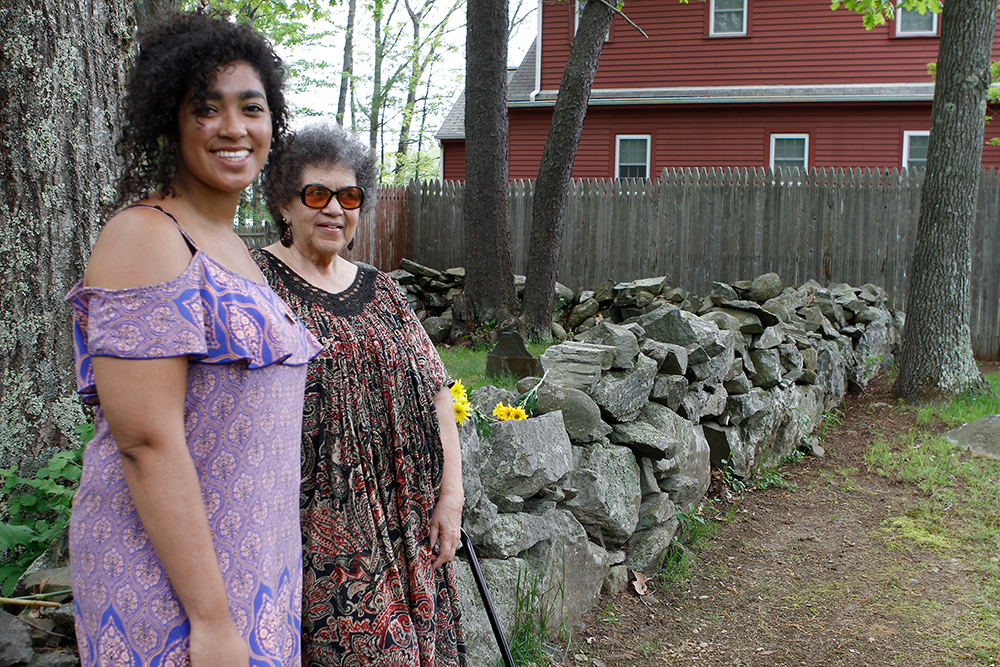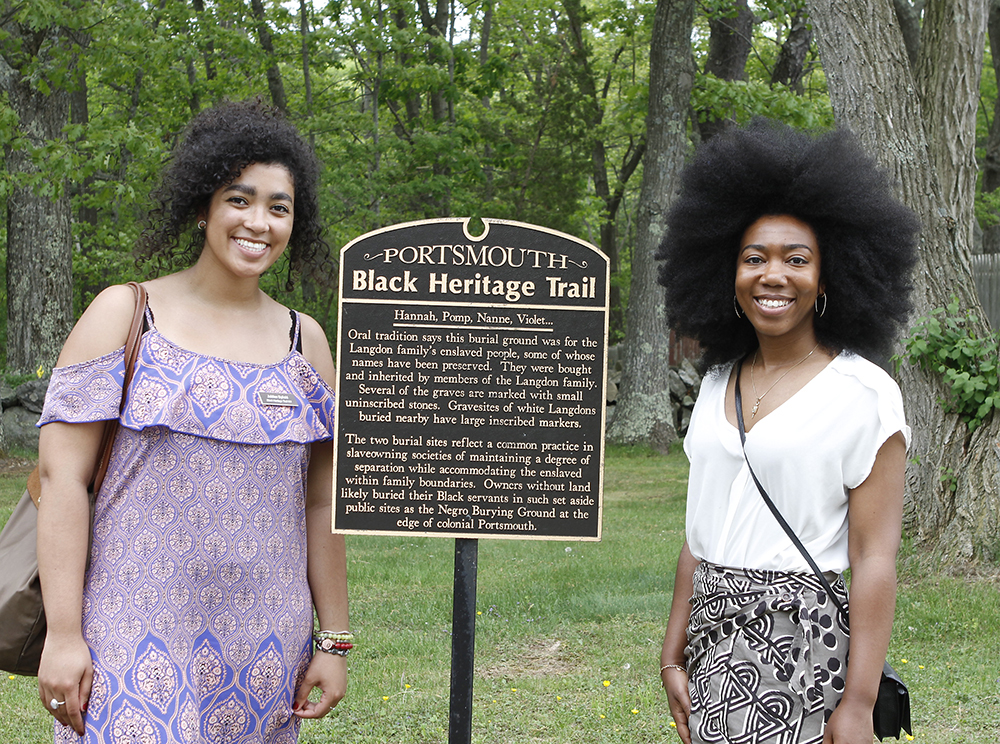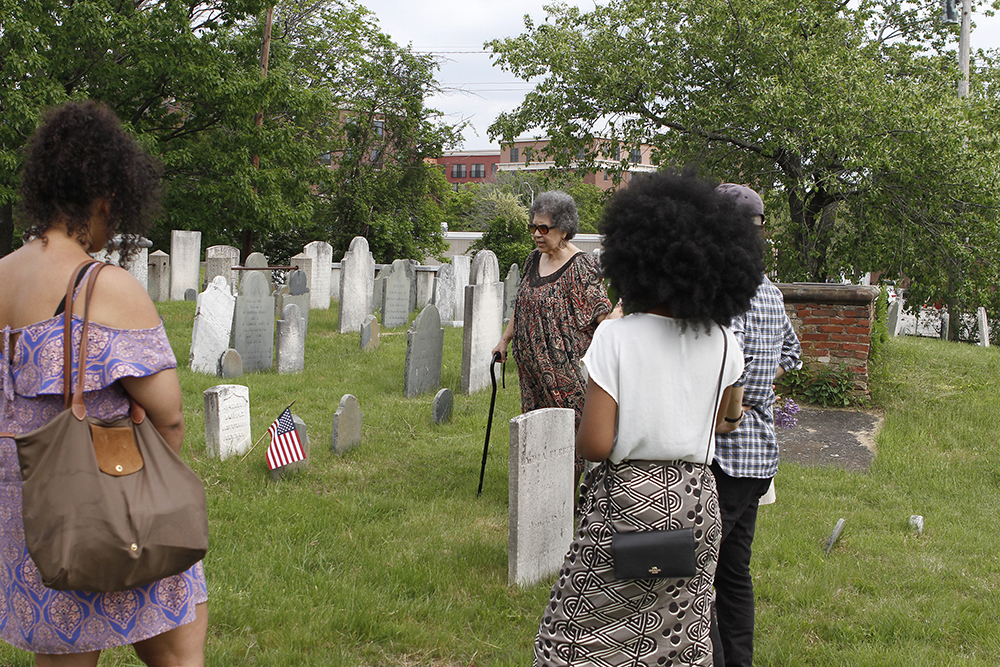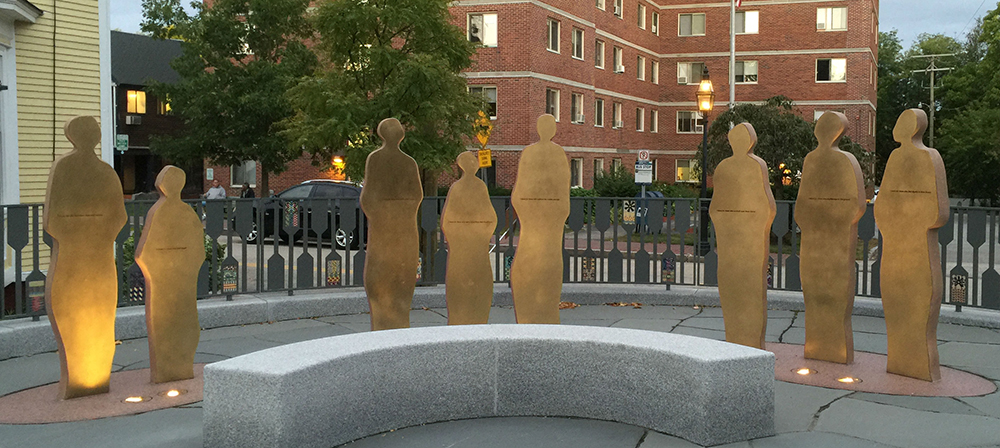In Remembrance for Memorial Day Weekend 2018
Portsmouth NH, May 26, 2018 – Led by Sankofa Scholars Valerie Cunningham and Jubilee Byfield, a small group gathered to leave flowers at the gravesites of enslaved and free Africans who were among those serving the Seacoast area’s most prominent Revolutionary Era colonial families. Gravesites at the African Burying Ground at Langdon Farm, the Old North Cemetery on Maplewood Ave., and the African Burying Ground Memorial at Chestnut Street were honored.
Adjacent to Christ Episcopal Church Rectory, 1035 Lafayette Rd., (Rt. 1) is the Langdon Slave Burial Ground

Sankofa Scholars Jubilee Byfield and Valerie Cunningham, Langdon Slave Burial Ground

Jubilee Byfield and visiting public historian Elon Cook Lee, at the Langdon Slave Burial Ground
Rural families typically established family burial grounds on their property rather than using centrally-located town burial grounds. When such households included enslaved Black servants, segregation was customary. According to oral tradition, this burial ground on one of the Langdon family’s farms was their slave burial ground. The plain, uninscribed local stones used as markers indicate low status, supporting this oral tradition. This contrasts with the engraved marble monuments in a nearby burial ground for the white Langdons. Those enslaved Africans buried here may include Hannah, Pomp, Nanne Violet, Scipio, and others owned by the Langdons. Among them appear to have been workers essential to the rural economy: a tanner, wheelwright, and teamsters, along with routine household support. They likely moved seasonally from the Langdons’ in-town residences to the outlying farms, as their labor was needed. They represent a number of enslaved farm workers who were part of the colonial New Hampshire population.
Old North Cemetery on Maplewood Ave.

Valerie Cunningham at Prince Whipple’s burial site (the white gravestone pictured to the left of flag), Old North Cemetery, Maplewood Ave.
At the Old North Cemetery, markers of some early African Americans include Prince Whipple; Esther Mullenaux & Elizabeth Smith; Pomp & Candace Spring and unmarked graves include the “Unidentified” remains recently found at the stonewall.
Although no marker exists for Dinah Whipple, the Portsmouth Black Heritage Trail believes that her surviving family and friends would have insisted she be laid to rest next to her husband, Prince Whipple. Then just a few steps away, we find their granddaughter Elizabeth is buried next to Esther Mullinaux, the Whipples’ daughter. Also nearby are contemporaries of both Prince and Dinah, an equally prominent couple, Pomp and Candace Spring. While Pomp was the highly esteemed president of the local African Society and a successful businessman, Candace likely was a member of the Ladies’ Charitable African Society that supported Dinah Whipple’s school for Black children. In fact, we believe there are many unmarked graves of African-Americans in this cemetery, people to be remembered for simply living their life.
African Burying Ground Memorial at Chestnut Street, between State & Court Streets

African Burial Ground Memorial, Chestnut Street
This cemetery was actively used into the late 1700s when the area west of Chestnut Street was part of the undeveloped outskirts of Portsmouth. As the town flourished and developed into the early 1800s, burial sites disappeared from memory and were built over. The old “negro burying ground” eventually was forgotten. Now this small memorial park offers a place for remembrance.

